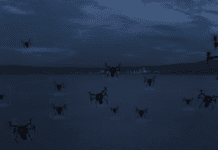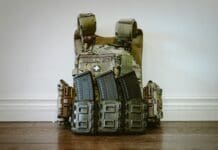This post is also available in:
 עברית (Hebrew)
עברית (Hebrew)
The U.S. Army announced a major milestone in its anti-drone efforts, claiming it achieved its first “air-to-air non-kinetic defeats” using Coyote Block 3 drones.
During a US Army demonstration that moves the variant closer to deployment, Raytheon Missiles & Defense, a Raytheon Technologies business, successfully defeated a swarm of drones with its reusable Coyote Block 3 non-kinetic effector.
In this sense, “non-kinetic” refers to systems that defeat hostile UAVs without using a physical projectile of any kind. That would typically mean the Coyotes used either an electronic warfare “jammer,” or a form of directed energy like high-powered microwaves. “In some ways, drones carrying non-kinetic counter-UAS (C-UAS) solutions have an advantage over drones armed with traditional munitions in that they can be reused, as opposed to being destroyed by onboard explosives. In addition, some of these non-kinetic solutions can engage multiple targets without needing to be rearmed,” according to thedrive.com.
Derived from the expendable Coyote loitering munition, Block 3 utilizes a non-kinetic warhead to neutralize enemy drones, reducing potential collateral damage. Unlike its expendable counterpart, the non-kinetic variant can be recovered, refurbished, and reused without leaving the battlefield.
During the test, the Coyote engaged and defeated a swarm of 10 drones that differed in size, complexity, maneuverability, and range. It achieved several significant firsts, according to the company’s announcement:
- Air-to-air non-kinetic defeats;
- Survivability, recovery, refurbishment and reuse during the same test event;
- Successful launch from the Coyote Block 2 system;
- Extended range engagements, communication and KuRFS radar track.

























